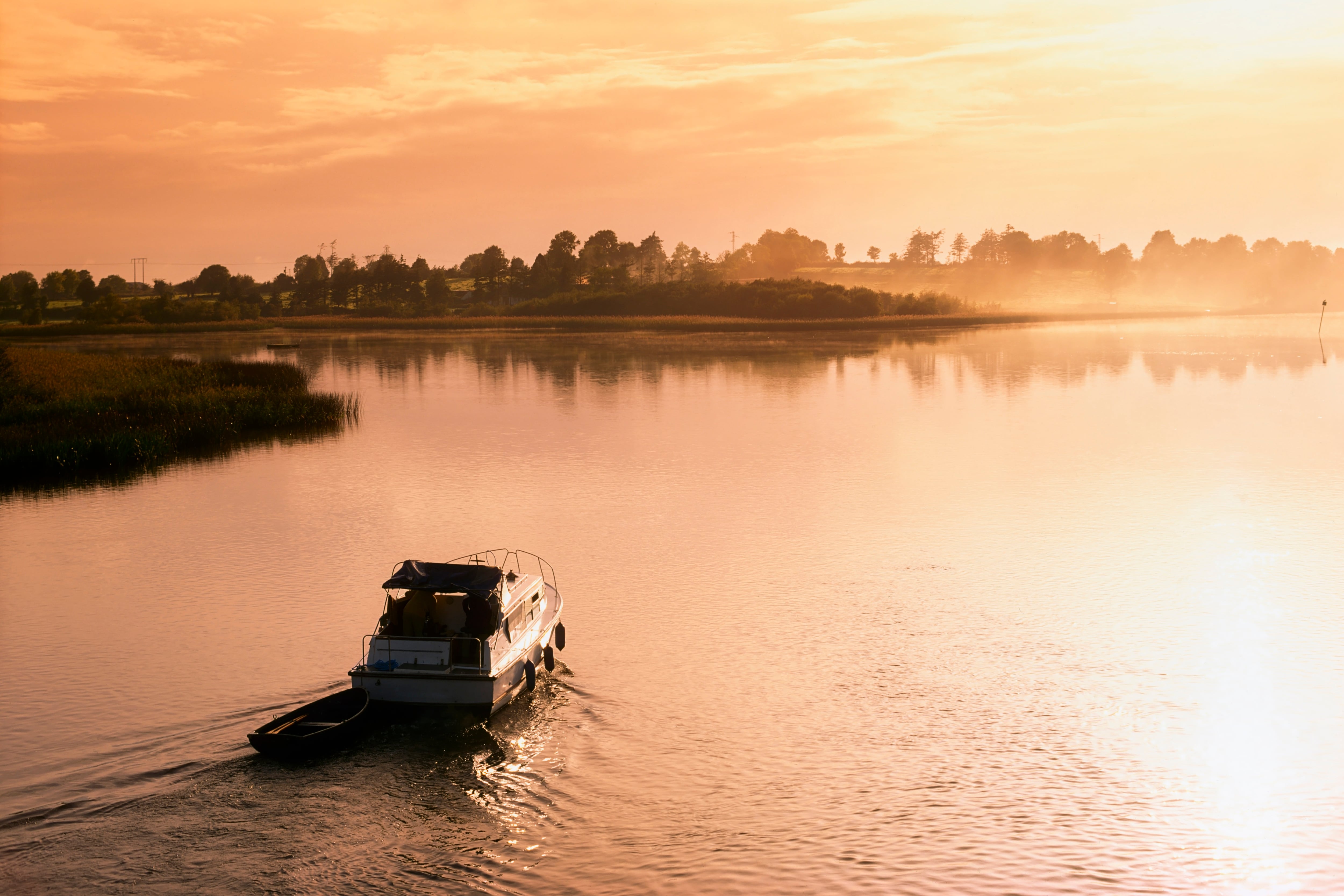When the Cathaleen’s Fall hydroelectric power station was built at the mouth of the river Erne in the 1950s, the water level of Lough Erne dropped by about 1.5 metres. Small islands that locals had never seen before emerged above the water. For farmers who owned land on the lake’s edge around Ballyshannon, Co Donegal, the receding water levels dried out strips of the foreshore.
A few weeks ago, under the scorching sun, I stood on the edge of Lough Erne with farmer Patrick McGurn, the landowner. The area where we stood was previously underwater, but over time, it has transformed into a native mixed woodland. First, water-loving alder trees appeared, followed by ash, whitethorn, holly and, more recently, native oak.
We stepped into the woodland, finding relief from the sun’s heat, and walked along a series of narrow pathways Patrick had laid during the pandemic. These pathways opened a woodland route from his house along the lake’s edge to the fields beyond.
A small gate marked the end of the wood, and we entered a species-rich fen meadow, full of purple meadow thistle, lemon-hued tormentil and indigo bugle. The long oval leaves of the devil’s bit scabious, which flowers in September, were scattered throughout; it’s the main foodplant of the larvae of the marsh fritillary butterfly, Ireland’s only legally protected insect, which lives here. At every step, funnels of silver spider webs wove around the flowers, and a haze of insects hovered in the air.
READ MORE
As monoculture fields are like a long-abandoned rural village for nature, devoid of life, this field is like a crowded city, with every nook and cranny home to a different species. The scarce narrow-bordered bee hawkmoth, which looks like a bee, is here, as are 19 butterfly species. It creates an open restaurant for birds, and curlew and lapwing have nested in the recent past. If the field was judged for nature, it would get the top mark.
[ A new marine national park in Kerry? Nobody told the fishermenOpens in new window ]
But Patrick, who was so intrigued with meadows that he did a doctorate on them, wants to talk about his herd of Angus and Simmenthal cattle. As the cascading song of the willow warbler rang out, he looked across the meadow and told me it would not exist without his animals. Nature is constantly trying to turn this space into woodland, so by allowing the cattle to graze the field in the early and late months of the year, coarse vegetation is removed, making space for the flowering plants to thrive.
His cattle are sold into the beef market, and he tells me he’d get more money if he put fertiliser on the field to encourage ryegrass growth to feed his livestock. He told me he doesn’t get paid for biodiversity. “If we as a society want to keep these species-rich meadows, how do we do it in a farming situation when it’s not economic?”
We turned our backs on Lough Erne and walked up a narrow laneway. The hedgerow spills across the path, and I lowered my head to avoid the insects.
His farm isn’t just about planting trees and sucking carbon out of the air, but of creating flower-rich fields for insects and birds to thrive
Patrick has about 20 acres of perennial ryegrass – a sweet, sugary grass which he uses as feed for his animals during winter when the grass in the fields stops growing. Ryegrass is a locally grown alternative to imported feed from South America, but its heavy reliance on fertiliser comes at a cost to nature. The only visible life in the field is a white butterfly fluttering over a small, lighter-coloured patch that he missed when spreading fertiliser.
It’s a balance between food production and nature. He has 3,000 metres of hedges, three hectares of woodland and vast swathes of species-rich meadows, some of which he cuts for hay. However, the market pays for food, not nature, and because of that, Patrick’s approach to managing his land means he is economically disadvantaged.
We reached the field with his cattle. They lazed in the shade under the trees, swishing their tails to keep the insects at bay. The clods of heavy clay soil stick to my boots. Patrick said he digs it out for his sister Anna, a ceramist, to make pottery.
We walked into his lowland raised bog, which he had restored. Patrick grabbed a handful of pinkish sphagnum moss and squeezed gently. As the water poured through his fingers, he spoke of the bog’s enormous capacity to deal with flooding. A frog hopped near our feet and landed with a delicate splash, while near the bog’s shaded border with the hedgerow, a marsh fritillary butterfly basked in the sun. Patrick hopes farmers who grow their bogs might one day be paid for the carbon stored within them.
He doesn’t indulge the siloed thinking of some ecologists or agriculturalists that it’s either food or nature; instead, he has found a way forward with a system that produces both. His farm isn’t just about planting trees and sucking carbon out of the air, but of creating flower-rich fields for insects and birds to thrive.
The only problem, and it’s a fundamental one, is how farmers like Patrick are financially paid for their work. It is, after all, beneficial to us all.
[ Juvenile jackdaws have stunning Cillian Murphy-esque blue eyesOpens in new window ]














